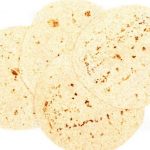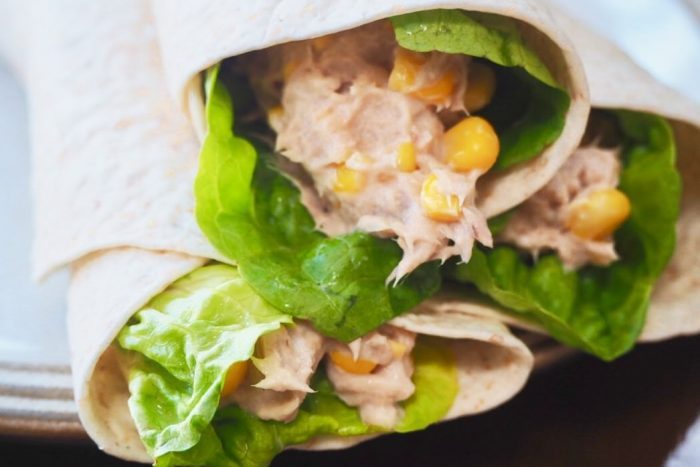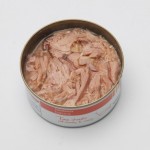A popular, nutritious and tasty lunchtime option, covering 3 main food groups - simple and fun to prepare. Make it even tastier by adding diced cucumber, onion and/or tomato to the mix.
Skills Check
Follow a recipe; follow food safety & hygiene rules; tidy away; use measuring spoons and cups; use a citrus squeezer; use a colander; season to taste.
Equipment
Tin opener, small bowl, colander, measuring spoons, spoon, citrus squeezer, fork.
Allergens (Please note the allergens listed are indicative only. Allergens vary depending on brand; check the labels on the products you use)
Wheat | Gluten | Mustard | Milk | Eggs | Fish
Ingredients (serves 2):
- 2 large wholemeal wraps
- 1 x 160 g tin of tuna in spring water
- 1 x 160 g tin of sweetcorn
- 2 tbsp reduced fat mayonnaise
- Juice of half a lemon
- Black pepper
- 1 baby gem lettuce, washed
Method
- Open the tin of tuna and drain off the water.
- Repeat with the sweetcorn.
- Place the tuna and sweetcorn in a bowl and add the mayonnaise, lemon juice and black pepper. Use the fork and mix well.
- Place the lettuce down the middle of each wrap and spoon the tuna mix on top of the lettuce.
- Fold up the bottom third of the wrap, then roll the wrap up from one side to the other to secure the filling.
So thinking about tuna & sweetcorn mayo wraps ...

Tuna is an excellent source of protein, as well as a range of vitamins and minerals. Fish is lower in saturated fats than meats so is a really healthy source of protein in our diets.
Vegetables are so good for us! Full of vitamins and minerals.
Nutritional Information
| Energy | 1455kJ/347kcal | 17% | |
| Med | Fat | 11.0g | 16% |
| Low | Saturates | 2.7g | 14% |
| Low | Sugars | 3.6g | 4% |
| Low | Salt | 0.45g | 8% |
per 249g serving
% of an adult's reference intake
Typical values per 100g: Energy 584kJ / 139kcal
Notes
A traffic light system is used on nutrition labels to make it easier to see which foods and drinks are lower in calories, fat, sugar and salt. Try and choose more ‘greens’ and ‘ambers’ and fewer ‘reds’, and stick to smaller portions of ‘reds’.
Just because a recipe or a food has a red traffic light doesn’t mean you shouldn’t eat it. Understanding why a food or recipe might have a red light can be helpful. For example oily fish is high in total fat and so any recipe containing oily fish is likely to be ‘red’ for fat. But it is recommended that we eat oily fish at least once a week because the type of fat it contains is beneficial for our health.
% Reference Intakes are also shown. Reference Intakes are guidelines about the approximate amount of particular nutrients and energy required for a healthy diet (based on an average-sized woman doing an average amount of physical activity). Most children will require less than these Reference Intakes. The contribution of one serving of a food or drink to the Reference Intake for each nutrient is expressed as a percentage.




